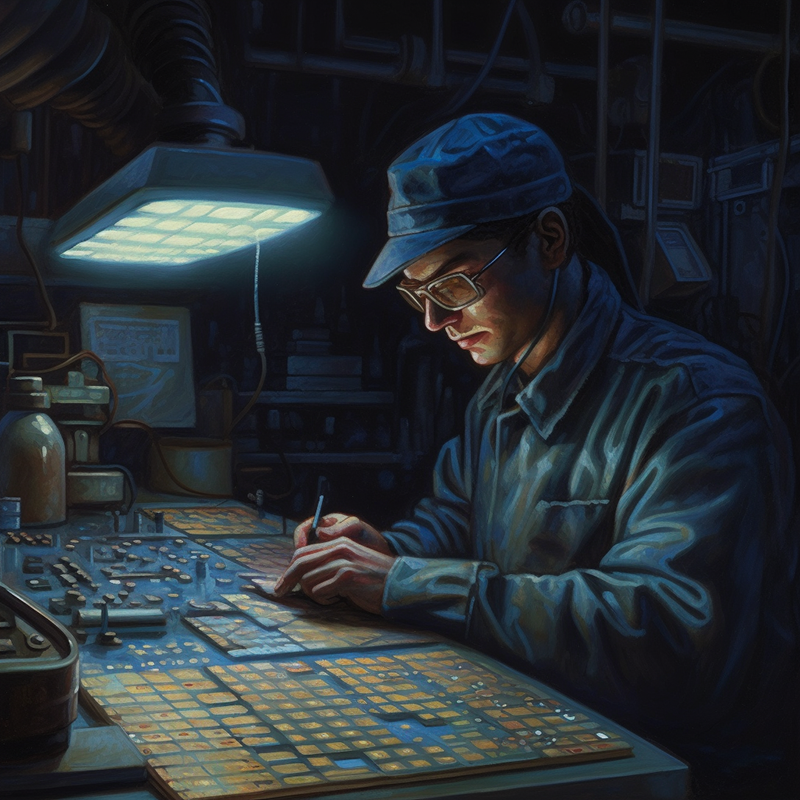Why DBC is replaced by DPC in ceramic PCB manufacturing?
Ceramic PCBs are key components in many electronic devices and they have undergone significant development over the years. The traditional method of producing ceramic PCBs was using Direct Bonded Copper (DBC) technology, but this has since been replaced by Direct Plated Copper (DPC) technology. In this article, we will explore the advantages of DPC over DBC in ceramic PCB manufacturing.
Introduction: DPCs and DBCs
Ceramic PCBs are critical components in many electronic devices that must be able to operate under harsh conditions, including high temperatures, extreme vibration and corrosive environments. DBC technology is the traditional method of producing ceramic PCBs. It involves bonding copper foil directly to a ceramic substrate, which is then subjected to a high-temperature sintering process. However, this approach has some limitations, including low bond strength, which can lead to delamination, and a high coefficient of thermal expansion, which can lead to cracking and failure of the copper layer.
DPC technology, on the other hand, involves electroplating copper directly onto a ceramic substrate and offers several advantages over DBC technology. In this article, we will explore the advantages of DPC technology over DBC technology in ceramic PCB manufacturing.
Advantages of DPC technology
1. Better bond strength
Electroplating copper directly onto a ceramic substrate produces a stronger bond than that achieved by DBC techniques. This is because the electroplating process creates a stronger mechanical and chemical bond between the copper and the ceramic substrate, resulting in higher bond strength. This means that DPC ceramic PCBs are less likely to delaminate, increasing their reliability and longevity.
2. Lower coefficient of thermal expansion
DPC technology has a lower coefficient of thermal expansion than DBC technology. This means that DPC ceramic PCBs are less likely to experience copper layer cracking and failure due to thermal stress. In addition, DPC technology allows the use of thinner copper layers, which reduces the overall thermal expansion coefficient of the PCB.
3. Improved Electrical Performance
DPC technology allows the use of thinner copper layers, reducing parasitic capacitance and inductance. This in turn leads to improved electrical performance, including higher frequency response, lower signal distortion and lower power consumption. DPC ceramic PCBs also have a low dielectric loss tangent, which improves their high-frequency performance.
4. Lower cost
DPC technology is a more cost-effective ceramic PCB production method compared to DBC technology. This is because DPC technology eliminates the need for a separate bonding process, reducing manufacturing time and cost. In addition, DPC technology can use thinner copper layers, thereby reducing raw material costs.
In conclusion
In summary, DPC technology has several advantages over DBC technology in ceramic PCB manufacturing. These include better bond strength, lower coefficient of thermal expansion, improved electrical performance and lower cost. As a result, DPC ceramic PCBs are more reliable, perform better and cost less to produce than their DBC counterparts.
Improved electrical performance and reduced manufacturing costs compared to DBC technology. These advantages make DPC ceramic PCBs a more reliable, higher-performing and cost-effective choice for electronic equipment manufacturers.

DPC technology has revolutionized the ceramic PCB manufacturing industry by offering significant advantages over traditional DBC technology. With better bond strength, lower coefficient of thermal expansion, higher electrical performance and lower cost, DPC ceramic PCBs are becoming the first choice of electronic equipment manufacturers.
If you are in the market for ceramic PCBs, it is important to choose a manufacturer that uses the latest DPC technology to ensure you are getting the highest quality product. By partnering with a reputable manufacturer using DPC technology, you can ensure your ceramic PCBs are reliable, high-performance and cost-effective.
All in all, DPC ceramic PCB has replaced DBC ceramic PCB in ceramic PCB manufacturing due to its superior performance, reliability and cost-effectiveness. By choosing a manufacturer that uses the latest DPC technology, you can ensure that your electronic equipment will perform at its best in harsh conditions and provide the best possible user experience.






















































 HOME
HOME







